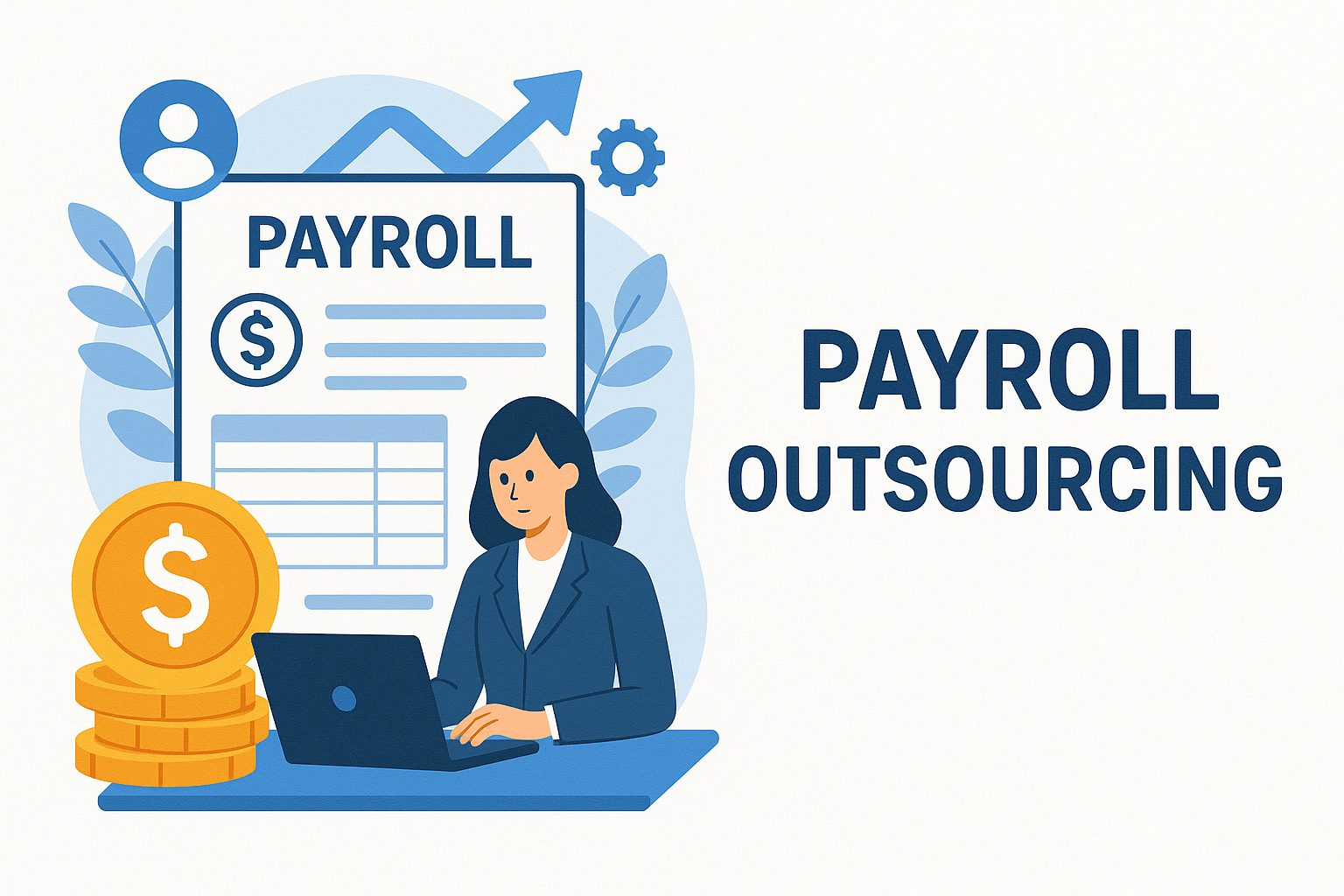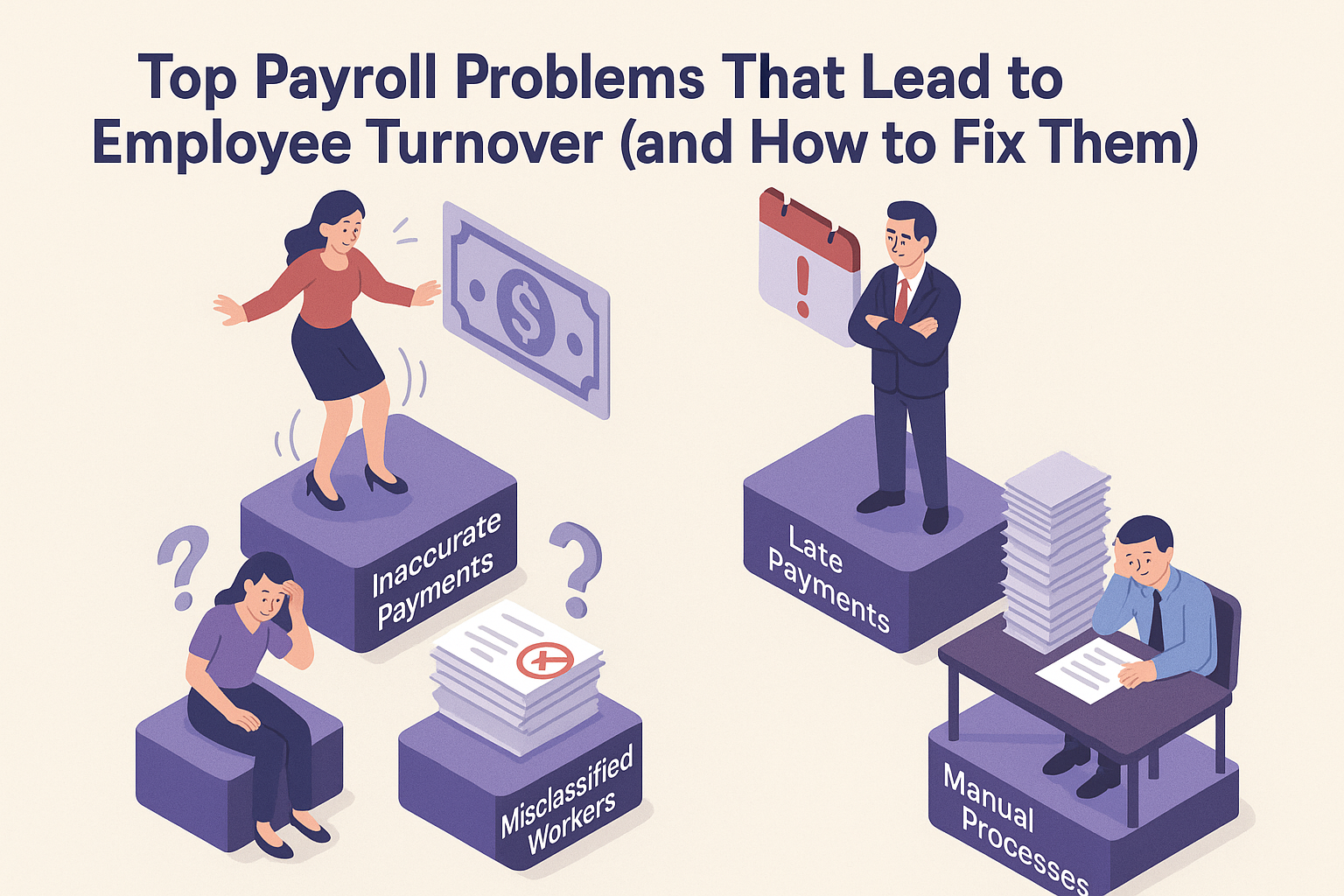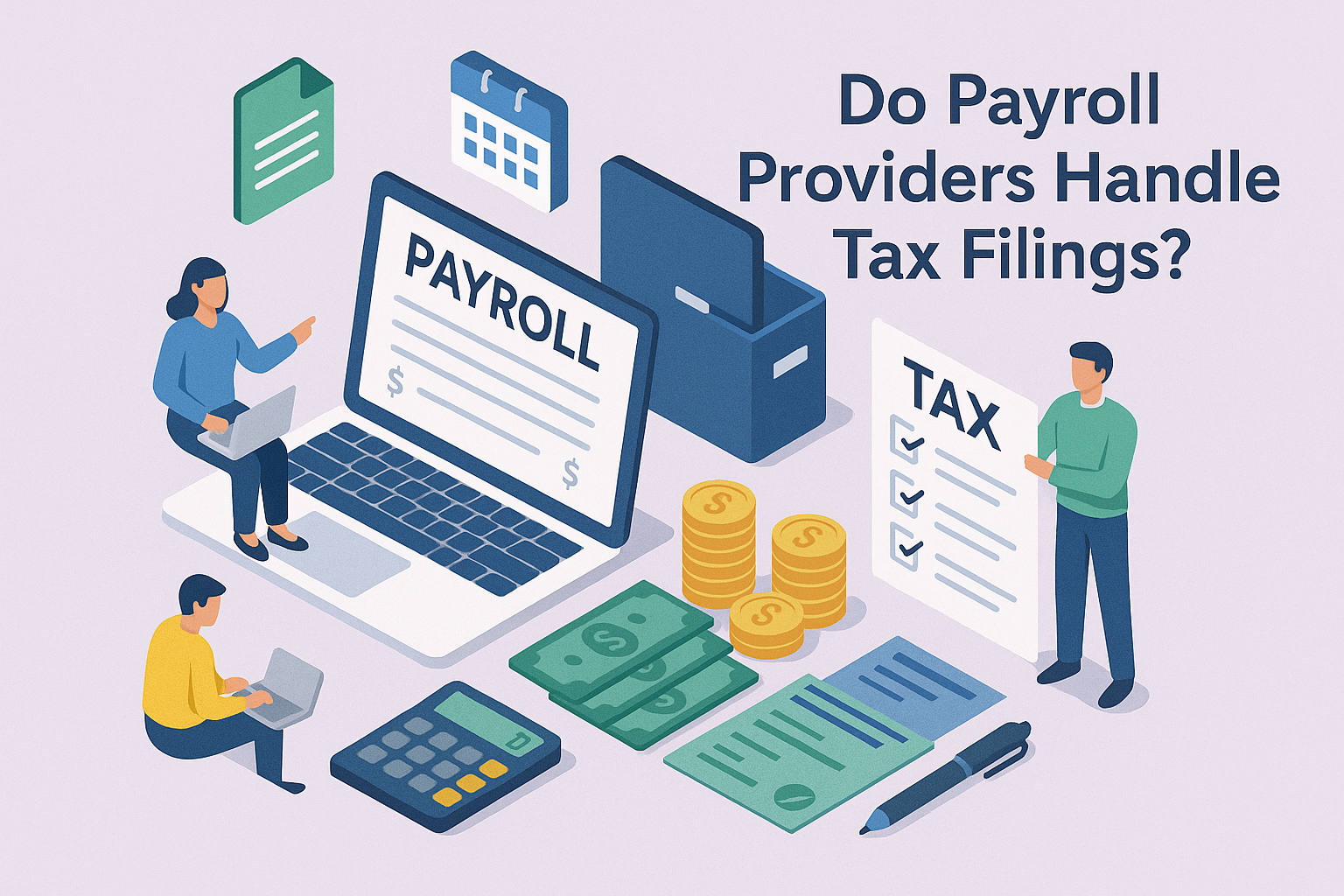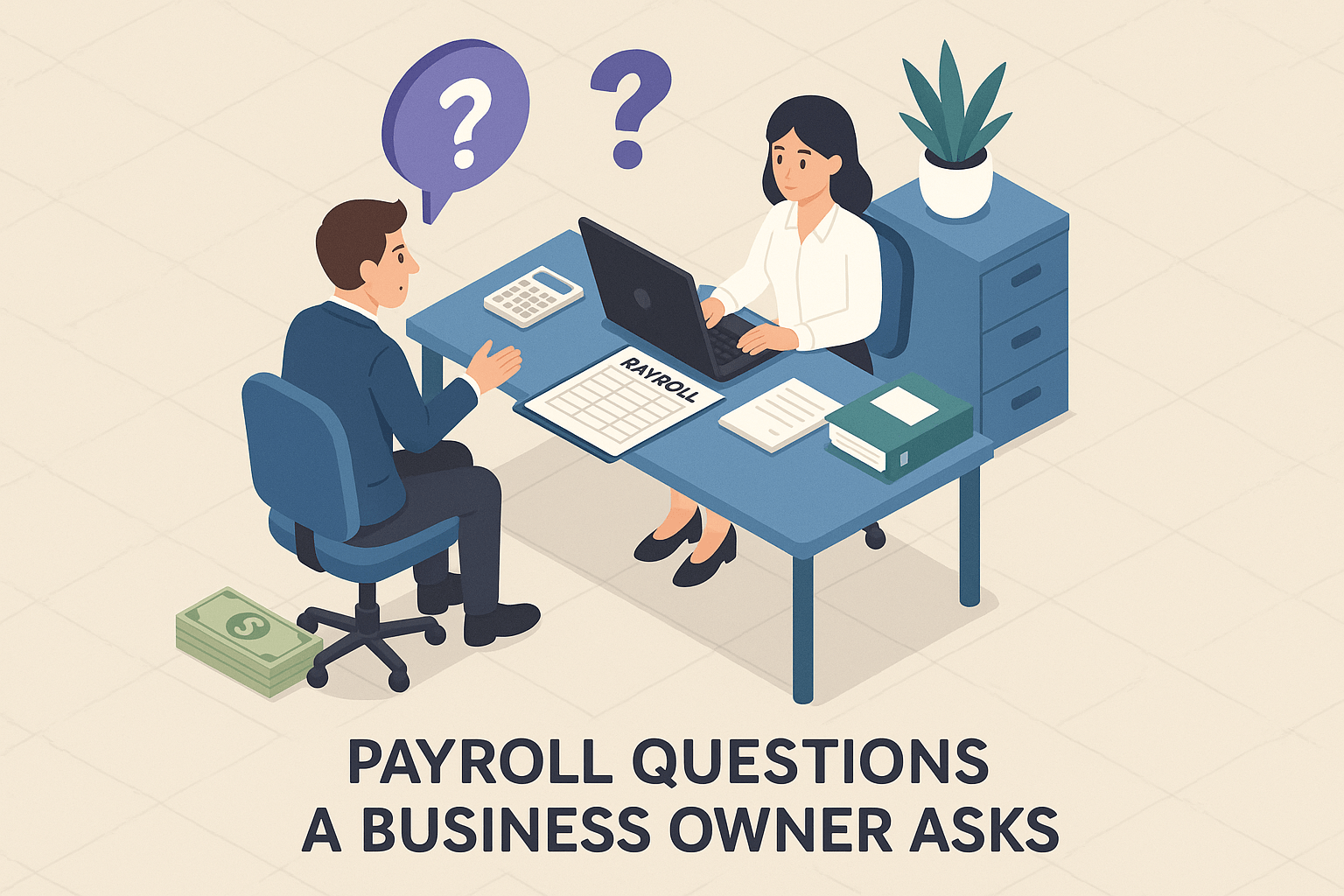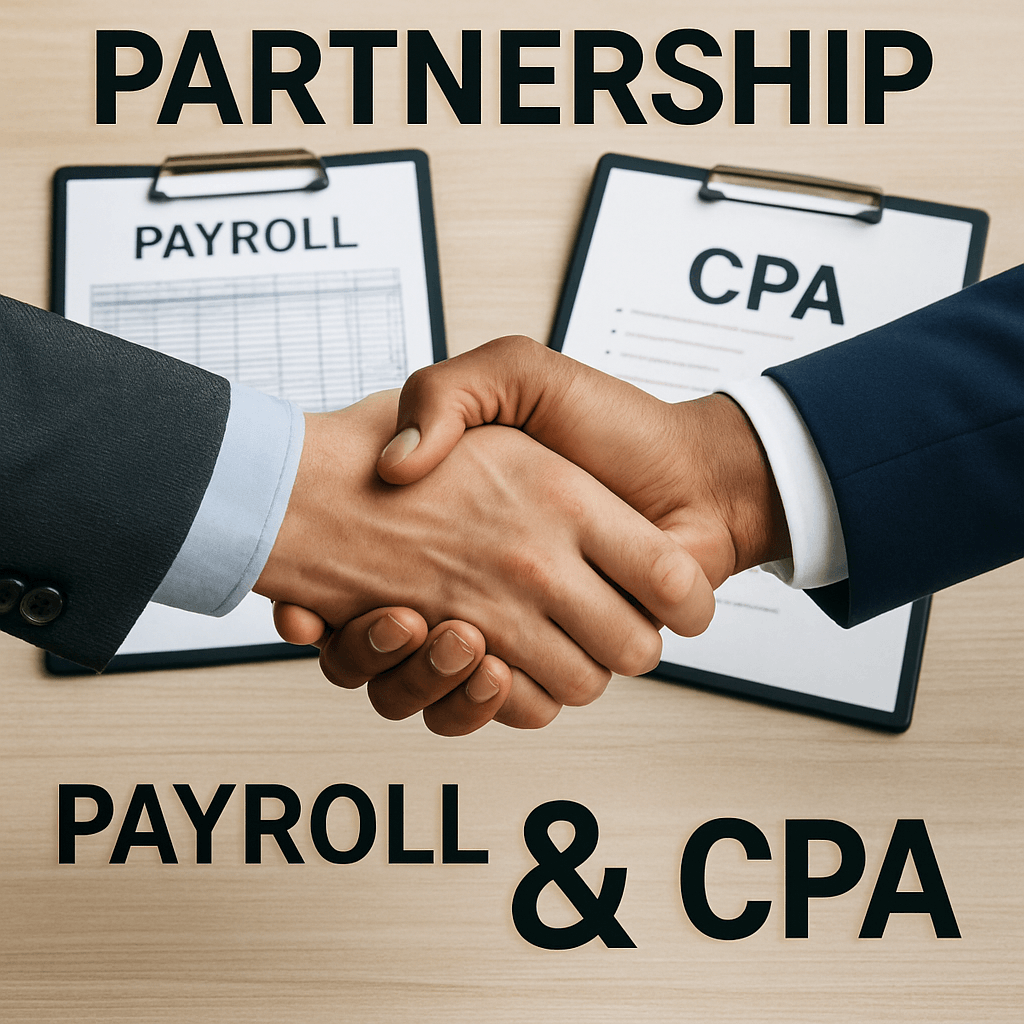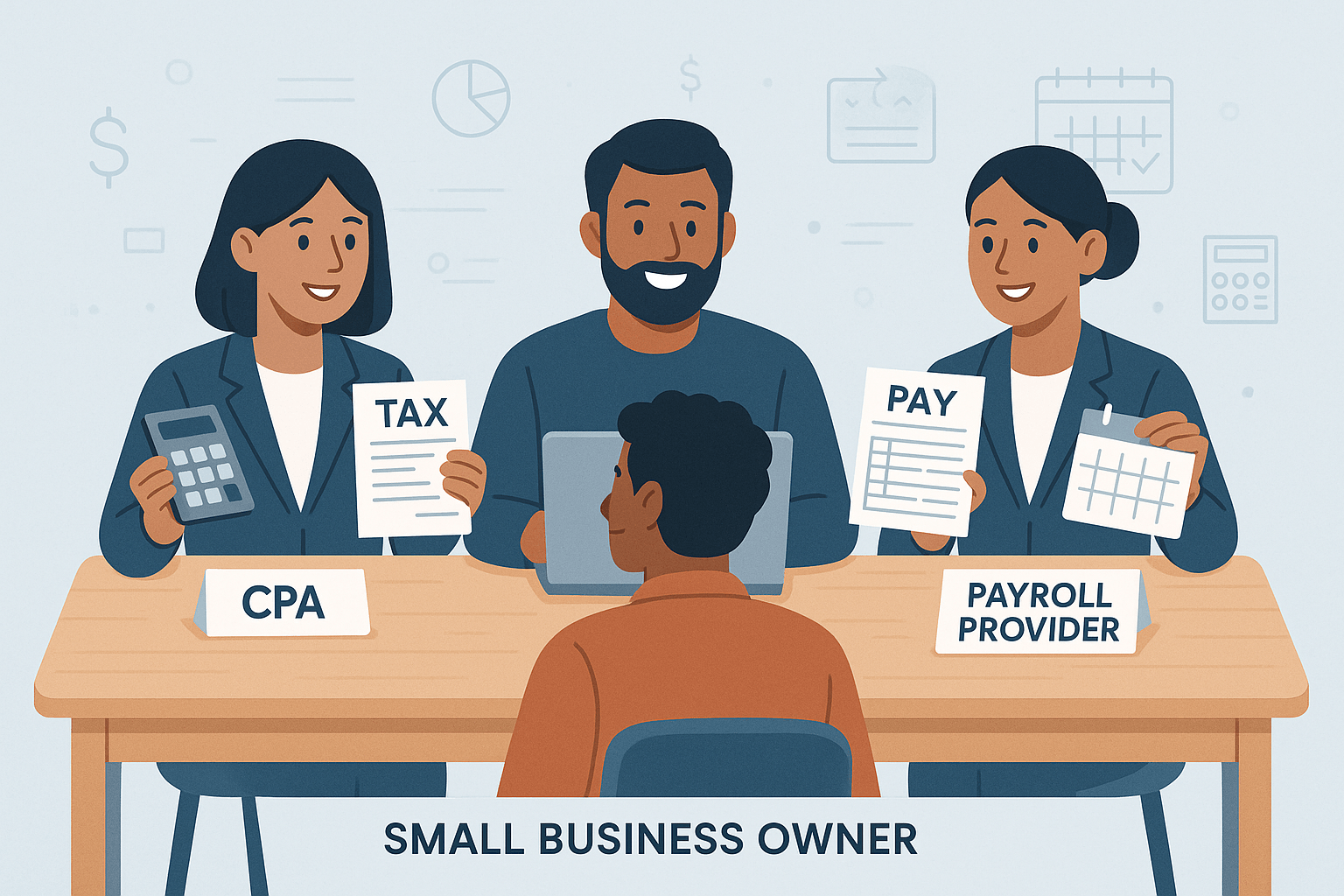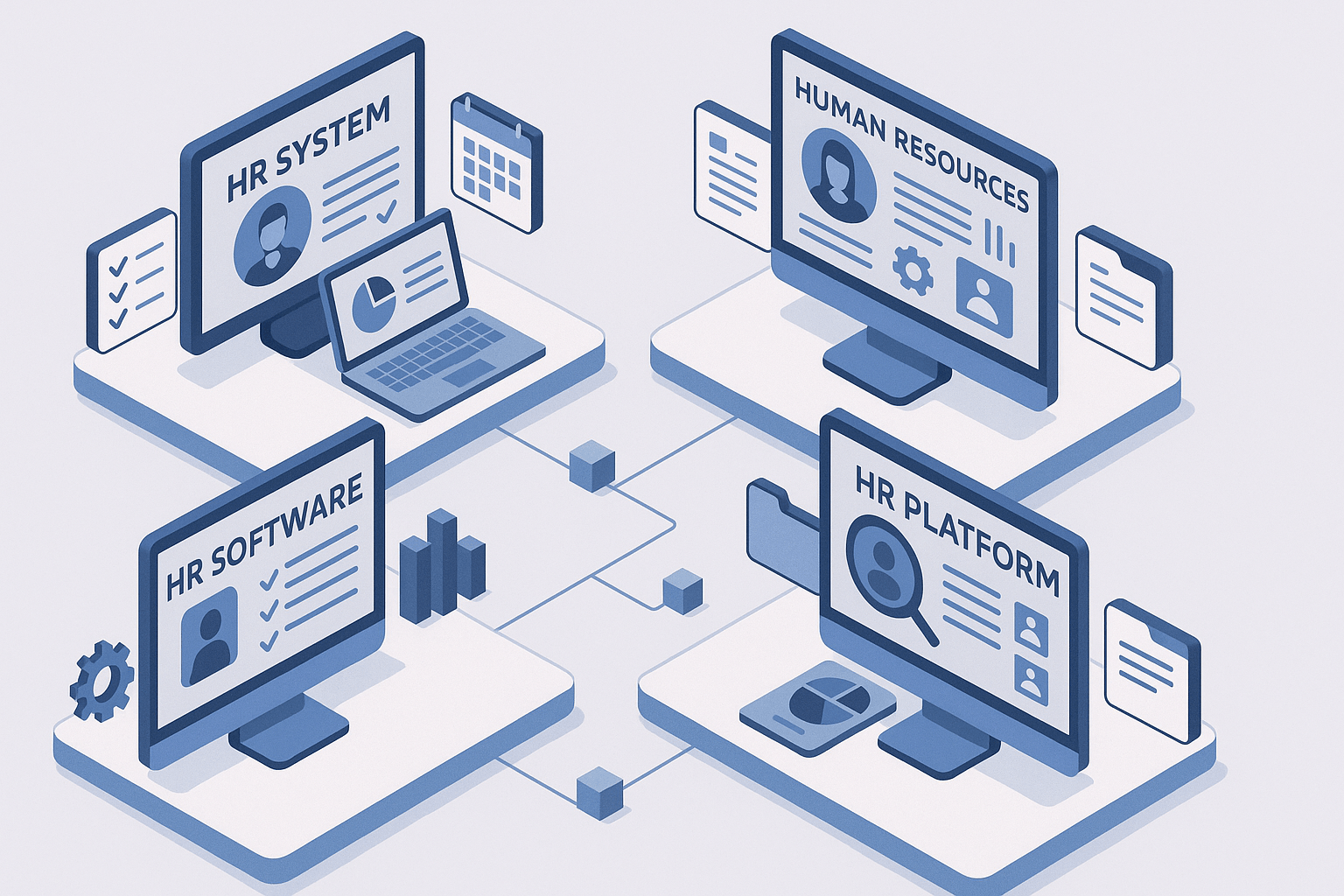10 Common Payroll Mistakes (and How to Avoid Them)
November 20th, 2025
6 min read
Managing payroll in-house can feel like a smart cost-saving move—until compliance deadlines, tax changes, and manual errors start eating into valuable time and cash flow.
At Lift HCM, we hear from leaders who spend hours every month tracking pay runs and tax deposits only to discover small errors that lead to big headaches. Payroll isn’t only about paying employees correctly; it’s about meeting hundreds of federal, state, and local regulations that change every year.
In this article, we’ll outline the 10 most common payroll mistakes small and mid-sized businesses make, why they happen, and the proven steps to avoid costly fines and wasted hours. You’ll walk away with a clear understanding of how to strengthen accuracy, compliance, and confidence in every pay cycle.
Table of Contents
- Why Payroll Accuracy Matters More Than Ever
- The 10 Most Common Payroll Mistakes (and How to Prevent Them)
- Why Outsourcing Payroll Reduces Risk
- Frequently Asked Questions (FAQ)
- Ready to Transform Payroll Into a Strategic Advantage?
Why Payroll Accuracy Matters More Than Ever
Payroll accuracy influences trust, culture, compliance, and long-term financial health. According to the IRS, nearly one in three small businesses faces payroll-related penalties each year, often totaling hundreds or thousands of dollars. The American Payroll Association reports that as many as 8% of paychecks include errors. Each mistake leads to rework, employee frustration, and exposure to wage claims.
For teams operating across multiple states, the risk increases quickly. Multi-state payroll requires tracking dozens of local tax rates, filing rules, and employment laws. Even small oversight—like a forgotten rate update—can trigger penalties.
Lift Insight: Most penalties linked to payroll mistakes come from avoidable manual processes. When companies automate filings, time tracking, and calculations, accuracy improves quickly.
The 10 Most Common Payroll Mistakes (and How to Prevent Them)
💡 Did You Know? According to the Society for Human Resource Management (SHRM), payroll errors account for more than 30% of compliance issues flagged during HR audits. Meanwhile, the IRS estimates that over $6 billion in payroll penalties are assessed annually across U.S. employers.
|
Payroll Mistake |
Potential Penalty |
Quick Fix |
|
Late tax filing |
2–15% of tax due |
Automate EFTPS deposits |
|
Form errors |
IRS rejection |
Validate data fields |
|
Pay inaccuracies |
Wage disputes |
Sync time tracking |
|
Misclassification |
Back taxes, interest |
Apply IRS Common Law Test |
|
Outdated info |
Incorrect filings |
Annual employee review |
|
Late payroll |
Morale damage, penalties |
Pre-schedule runs |
|
Bank holidays |
Delayed paychecks |
Check federal schedule |
|
Tax deposits |
Compounding fines |
Verify EFTPS codes |
|
Recordkeeping |
FLSA violations |
Secure digital storage |
|
Legal updates |
Compliance gaps |
Subscribe to DOL/IRS updates |
1. Filing Payroll Taxes Late
Missing federal, state, or local payroll tax deadlines leads to automatic IRS penalties ranging from 2% to 15% of the unpaid amount. Late deposits also trigger daily interest, which adds up quickly.
Many employers fall behind because deadlines overlap with busy operational periods. Even one missed deposit increases the likelihood of receiving future IRS notices, which adds stress and administrative work.
How to avoid it
- Use the IRS Electronic Federal Tax Payment System (EFTPS) to automate on-time deposits.
- Add federal, state, and local due dates to your payroll calendar.
- Set reminders one week before each deadline for extra buffer time.
- Review all deposit requirements quarterly to stay current.
2. Submitting Incomplete or Incorrect Tax Forms
Incorrect Social Security numbers, transposed EINs, and mismatched totals often cause the IRS or state agencies to reject filings. This slows down year-end reporting and increases your risk of receiving penalty notices.
These mistakes usually happen when teams pull data from outdated spreadsheets or manually re-enter employee information. When filings get rejected, employers lose valuable time correcting and resubmitting them.
How to avoid it
- Reconcile gross wages, withholdings, and deductions before filing.
- Use software validation to flag missing or incorrect fields.
- Keep digital copies of all filings and confirmation receipts for at least four years.
- Review employee names and Social Security numbers for accuracy each year.
3. Paying Employees Incorrectly
Inaccurate paychecks stem from manual time entry, missed rate changes, or incorrect deductions. The Department of Labor recovers hundreds of millions in back wages each year tied to payroll errors.
One incorrect paycheck can damage trust and prompt questions about the accuracy of future pay cycles. Repeated issues often lead to formal wage disputes or employee turnover.
How to avoid it
- Integrate time tracking with payroll to prevent manual miscalculations.
- Audit pay rates and deduction tables monthly.
- Encourage employees to review pay stubs and report concerns quickly.
- Use alerts that notify you of unexpected changes in pay.
4. Misclassifying Employees and Contractors
Misclassification is one of the most costly payroll mistakes. When workers are classified incorrectly, employers are responsible for back taxes, penalties, and interest.
Misclassification also affects workers by limiting access to unemployment insurance, workers’ compensation, and employer-sponsored benefits. State agencies have increased enforcement in recent years, increasing the risk during audits.
How to avoid it
- Use the IRS Common Law Test as your guide.
- Submit Form SS-8 if worker classification is unclear.
- Review job duties and agreements annually.
- Confirm classification during organizational changes or restructuring.
5. Missing or Outdated Employee Information
Old addresses, incorrect names, or outdated withholding details cause incorrect filings or undeliverable W-2s. These issues often surface during year-end processing when timelines are already tight.
Mismatched information also increases the likelihood of tax notices because records do not match federal databases.
How to avoid it
- Have employees review their personal information each year.
- Sync HR, benefits, and payroll data so updates apply across all systems.
- Store W-4s and other documents in secure digital storage.
- Require updated information after significant life events.
6. Running Payroll Late
Late payroll undermines employee confidence. In many states, delayed paychecks carry penalties for each day they are late.
Employees rely on accurate, predictable pay for essential expenses. When payroll is late, it creates stress and leads to complaints, and repeated issues affect retention.
How to avoid it
- Process payroll at least two business days before payday.
- Review the Federal Reserve holiday schedule early each year.
- Automate recurring payroll cycles to prevent missed runs.
- Notify employees when holiday schedules shift deposit dates.
7. Incorrect Pay Rates or Deductions
When changes in pay rates, bonuses, garnishments, or benefits are missed, employees receive incorrect pay. Issues with deductions such as retirement contributions or insurance premiums also influence year-end reporting.
Incorrect pay rates may require back-pay corrections, off-cycle runs, and correspondence with employees.
How to avoid it
- Run audit reports each cycle to identify unexpected changes.
- Validate deductions during open enrollment and after role changes.
- Confirm bonus and commission details before processing payroll.
- Track pay rate approvals in a centralized system.
8. Overlooking Bank Holidays
Federal bank holidays delay ACH deposits by one or more business days. Even when payroll is processed on time, deposits may not reach employee accounts as expected.
Employers often forget that banks process payroll the business day before payday. When holidays shift that schedule, employees receive pay late.
How to avoid it
- Review the Federal Reserve holiday list each January.
- Adjust payroll processing dates to ensure on-time pay.
- Communicate schedule changes to employees in advance
- Build a one-day buffer for ACH processing during busy seasons.
9. Depositing or Reporting Employment Taxes Incorrectly
Deposits sent to the wrong tax account or filed with missing information lead to penalties and delayed posting. These issues often occur when employers update systems or change bank accounts without adjusting EFTPS settings.
Incorrect deposits may take several days to trace and reverse, increasing the risk of late payments.
How to avoid it
- Verify EFTPS credentials and tax type codes each quarter.
- Save all payment confirmations in secure storage.
- Reconcile tax liabilities weekly to prevent surprises.
- Review changes to your payroll provider or bank setup carefully.
10. Poor Payroll Recordkeeping
The Fair Labor Standards Act requires employers to maintain payroll records for at least three years. Missing or incomplete records create risk during audits or wage disputes.
Without proper documentation, organizations struggle to defend themselves in investigations. Missing records also slow down reconciliation and increase administrative burdens.
How to avoid it
- Store timecards, pay stubs, and tax forms in secure digital storage.
- Use version control to track changes to payroll entries.
- Perform quarterly reviews to ensure records are complete.
- Keep audit-ready documentation for all payroll-related decisions.
Why Outsourcing Payroll Reduces Risk
According to the National Federation of Independent Business, small-business owners spend up to five hours per pay period handling payroll manually. Multiply that by 26 pay periods, and payroll becomes a major drain on resources.
If you’re curious about the broader financial impact and strategic benefits, be sure to read our article, Outsourcing Payroll: A Cost-Benefit Analysis for Your Business, for an in-depth look at how making a change can support your long-term goals.

Frequently Asked Questions (FAQ)
Q: What are the most common payroll mistakes small businesses make?
A: The most common payroll mistakes include missing tax filing deadlines, submitting incorrect forms, inaccurate pay, employee misclassification, outdated employee information, processing payroll late, incorrect pay rates or deductions, overlooking bank holidays, depositing taxes incorrectly, and poor recordkeeping. Each of these can lead to costly fines, employee dissatisfaction, or compliance gaps.
Q: How can I reduce payroll errors in my organization?
A: To minimize errors, invest in payroll automation, regularly audit employee and pay data, maintain secure digital records, and stay updated on compliance requirements. Partnering with a provider like Lift HCM ensures you benefit from built-in error checks, proactive alerts, and expert guidance—significantly reducing manual mistakes.
Q: What should I do if I discover a payroll mistake after processing?
A: Address the error as soon as possible. Correct the mistake in your payroll system, communicate transparently with affected employees, and consult with your provider to process any adjustments or amended filings. Keeping thorough documentation of all corrections will support compliance during audits.
Q: Why is outsourcing payroll a good option for compliance?
A: Outsourcing payroll to a trusted provider gives you access to dedicated compliance expertise, automated tax filings, timely updates on regulatory changes, and reliable support. This not only reduces the risk of penalties, but also lets you focus your time on growing your business—not troubleshooting pay issues.
Ready to Transform Payroll Into a Strategic Advantage?
Managing payroll isn’t just about crunching numbers—it’s about building trust, protecting your business, and freeing up time to focus on what matters most. The most common payroll mistakes often stem from manual processes and overlooked compliance details, putting your company at risk for fines, lost productivity, and frustrated employees. By identifying these pitfalls and implementing the right safeguards, you can transform payroll from a source of stress into a pillar of reliability for your organization.
At Lift HCM, we combine deep compliance expertise with dedicated, personal support to help clients streamline payroll and navigate ever-changing regulations with confidence. Whether you’re looking to improve accuracy, save time, or gain peace of mind, a partnership with a trusted payroll provider can make all the difference. The stakes are high, but the solutions are within reach—empower your business to move forward with accuracy, compliance, and the support you deserve.
Contact Lift HCM for a complimentary payroll risk assessment or to schedule your personalized demo. Let’s take payroll off your worry list—for good.
Caitlin Kapolas is a results-driven professional with a strong background in account management and retail. She is dedicated to improving client experiences and building lasting relationships. Caitlin excels in identifying client needs, resolving issues, and implementing customized solutions that drive value. Her effective communication skills ensure high client satisfaction and loyalty, making her a trusted advisor and partner in meeting client needs with precision and professionalism.












